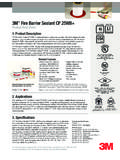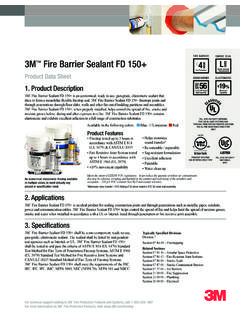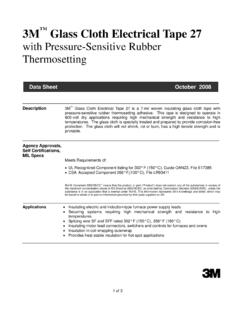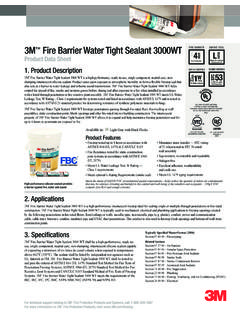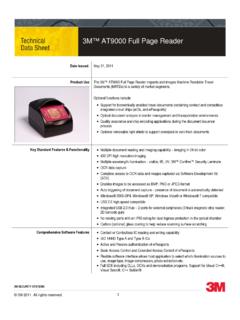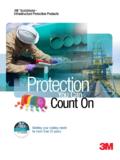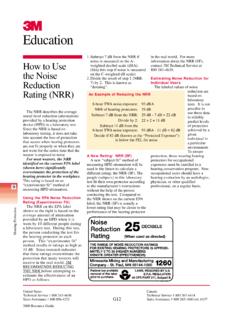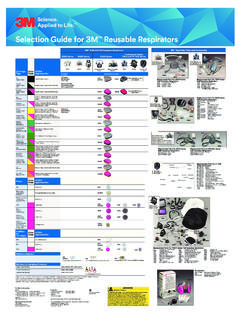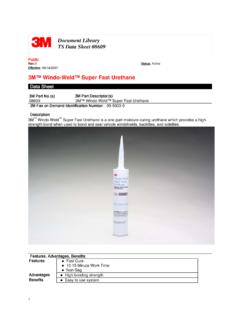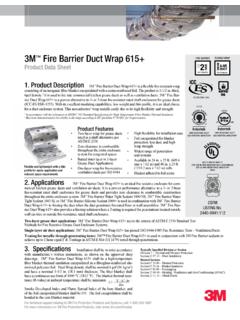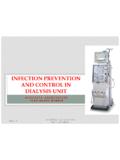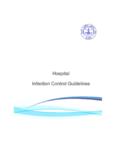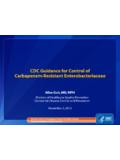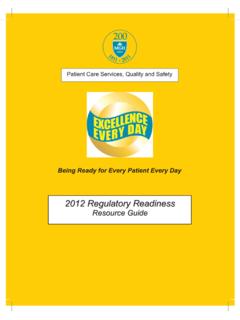Transcription of for Flexible Endoscopes
1 3M Clean-Trace . Hygiene Management System Hygiene Management Guide for Flexible Endoscopes 2. Contents Aim .. 4. Introduction .. 4. ATP bioluminescent monitoring technology .. 6. What is Adenosine Triphosphate? .. 6. The principle of the bioluminescent reaction .. 6. Data analysis and reporting .. 6. Recommended Monitoring Plan for Flexible Endoscopes .. 7. Section 1 Education, Training and Competency .. 7. Section 2A Assessment of the Manual Cleaning Process .. 9. Section 2B Routine Monitoring of the Effectiveness of Manual Cleaning .. 11. Implementation of an ATP Hygiene Monitoring 12. Identification of test points and sample plans.
2 12. Pass/Fail Threshold Recommendation .. 13. Determination of Testing Frequency .. 13. Collection of 13. Establish metrics for each section implemented .. 14. Establish corrective action procedures .. 15. Continuous improvement steps .. 15. Appendix 1 Procedure for Collection of Samples from Flexible Endoscopes .. 16. Appendix 2 Alternate Procedure for Collection of Samples from Flexible Endoscopes .. 18. Appendix 3 Sampling Set up for Pentax and Fujinon Flexible Endoscopes .. 21. Appendix 4 Example of Procedure for Sampling Olympus Model Flexible 23 3. References .. 25. Aim The Hygiene Management Guide is a document outlining the steps necessary to set up and implement an effective adenosine triphosphate (ATP) hygiene monitoring system within a healthcare environment.
3 This document details the application of ATP. hygiene monitoring for Flexible endoscope reprocessing after manual cleaning and prior to high-level disinfection or sterilization. Introduction In the US alone, over 11 million gastrointestinal endoscopy procedures are performed on an annual basis highlighting the beneficial role these procedures play in the prevention, diagnosis and treatment of ,2 Endoscopy procedures are performed using complex, reusable, Flexible instruments that, when inserted into the body, may become heavily contaminated with patient biomaterial and microorganisms, including potential pathogens. Careful reprocessing of Flexible Endoscopes between patients is critical to reducing the risk of cross-contamination and the possible transmission of pathogens.
4 Flexible Endoscopes are rated as semi-critical according to the Spaulding classification for medical devices and therefore it is required that these devices be decontaminated by high-level Meticulous cleaning of the endoscope must precede any high-level disinfection of these instruments. Cleaning is the removal of visible soil ( , organic and inorganic material) from objects and surfaces and normally is accomplished 4 manually or mechanically using water with detergents or enzymatic products. 9 Failure to perform proper cleaning leaves behind organic and inorganic residues that may interfere with the disinfection process increasing the risk for reprocessing failures and patient ,9,10.
5 In the case of gastrointestinal (GI) endoscopy, all published occurrences of pathogen transmission related to GI endoscopy have been associated with failure to follow established cleaning and disinfection/sterilization guidelines or use of defective equipment. 2 Because there continues to be recurrent, widespread incidences of lapses in adherence to establish reprocessing guidelines patients are routinely put at risk for ,4 Although current guideline documents make strong statements about the rarity of pathogen transmission from improperly reprocessed Flexible Endoscopes , there is now compelling evidence that the risks are much higher than originally ,18.
6 Contaminated Endoscopes have been linked to more outbreaks of health-care associated infections (HAIs) than any other medical Flexible endoscope reprocessing has been shown to have a narrow margin of safety. Any slight deviation from the recommended reprocessing protocol can lead to the survival of microorganisms and an increased risk of infection. 6 Current understanding suggests that if the recommendations for reprocessing Endoscopes are followed the risk of transmission of pathogens is rare. There is now compelling evidence that these assumptions may be incorrect and that the risks are much higher than presently ,17-20. The current risk estimates for pathogen transmission have been shown to be inaccurate, outdated and based on flawed methodology.
7 1 Documented, prolonged lapses in endoscope reprocessing are common occurrences putting patients at risk of ,17-20 Recent studies have shown that multi-drug resistant organisms (MDRO). ATP hygiene are being transmitted to patients with infection rates ranging from 6-42% representing a much higher incidence of pathogen transmission than is predicted by the current risk monitoring provides ,20 There is also evidence that current methods for cleaning and reprocessing Endoscopes may not be adequate. The result is the use of patient-ready Endoscopes an objective and that still harbor residual contamination (bioburden/microbes).16,19.
8 Quantifiable real- The American Society for Gastrointestinal Endoscopy (ASGE) states, The first and most important step in the prevention of transmission of infection by an endoscope is manual time approach cleaning of the endoscope with detergent solution and brushes. 5 Studies have shown to assess and that the manual cleaning step is prone to ,7 Direct observation has revealed that adherence to established protocols for manual cleaning occurs only 43% of the ,17. measure cleaning The need to evaluate the efficacy of the cleaning process has been recognized as an . efficacy. important part of Flexible endoscope ,9,10 It is recommended that both Endoscopes and reusable accessories be frequently visually inspected in the course of their use and reprocessing, including before, during, and after use, as well as after cleaning and before high-level disinfection.
9 2 This method of cleaning verification has severe limitations when applied to Flexible Endoscopes because the complex, narrow lumens in these devices cannot be directly visually inspected. 5. Currently, there is no standard to define when a device is clean, but it is generally 4 accepted that a cleaning process should include the reduction of the microbial bioburden and the removal of any organic and inorganic matter resulting in an instrument that is visibly clean and can be effectively disinfected or sterilized. The Centers for Disease Control and Prevention (CDC) Guideline on Disinfection and Sterilization in Healthcare Facilities states, Although the effectiveness of high-level disinfection and sterilization mandates effective cleaning, no real-time tests exist that can be employed in a clinical setting to verify cleaning.
10 If such tests were commercially available, they could be used to ensure an adequate level of cleaning. 9. ATP hygiene monitoring provides an objective and quantifiable real-time approach to assess and measure cleaning efficacy. The test can be performed in less than 30. seconds providing a real-time result that indicates the cleanliness of the instrument tested. This provides an opportunity to take any corrective action required such as re- cleaning and re-processing. Considering the new information on the increased risk for endoscopy-associated infection it is important to implement a routine monitoring program that detects reprocessing errors and monitors levels of endoscope contamination.
